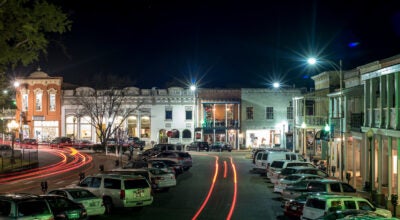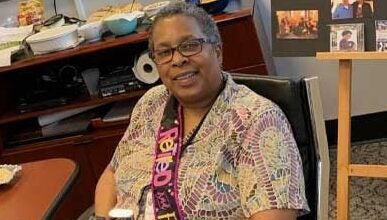New museum collection features poetry and photos
Published 12:00 pm Thursday, March 3, 2016
The newest exhibit at the University of Mississippi Museum is a collaboration of poetry and photography inspired by Langston Hughes’ award-winning poem “The Negro Speaks of Rivers,” and the museum is hosting a special reading today to celebrate it.
“Of Rivers: Photography by Young Suh, Poetry edited by Chiyuma Elliott and Katie Peterson” features 11 poems accompanied by photographs that interpret them. It runs through June 25 in the museum’s Lower Skipwith Gallery.
The museum is partnering with the Center for the Study of Southern Culture and its 23rd Conference for the Book, for a poetry reading at 3:30 p.m. today in the gallery. Many of the poets who contributed to “Of Rivers,” including Jericho Brown, Chiyuma Elliott, Derrick Harriell and Katie Peterson, as well as photographer Young Suh, will participate in the reading, which is free and open to the public.
The reading will be followed by an opening reception from 4:30 to 6 p.m.
“Almost 100 years after it was written, Hughes’ ‘The Negro Speaks of Rivers’ still inspires writers to think about how to live and what to do,” said Rebecca Phillips, the museum’s coordinator for membership, exhibits and communication. “‘Of Rivers’ invites the viewer to be part of that conversation. It invites them to discover and contemplate — and hopefully also delight in — some of the new creative work that responds to this famous and important poem.”
The exhibit started when organizers asked eight poets of differing styles and sensibilities to write something in response to Hughes’s 1921 poem. The participating poets are F. Douglas Brown, of Los Angeles; Jericho Brown, of Atlanta; Katie Ford, of Los Angeles; Rachel Eliza Griffiths, of Brooklyn, New York; Derrick Harriell, of Oxford; Dong Li, of Nanjing, China and Stuttgart, Germany; Sandra Lim, of Cambridge, Massachusetts; and Michael C. Peterson, of Cincinnati.
Suh, of Cerrito, California, was asked to visually respond to all the poems.
“What you experience in the gallery is the result of this collaboration: a literary and visual call and response,” Phillips said.
Because the artists featured in the exhibit can take for granted that readers and viewers know the relationship with the Hughes poem exists, some of their work foregoes explicit signals of connection, she said.
“Most of the poems and photographs have some things in common: they are specific, personal and idiosyncratic, not magisterial, or mythic or universal.”





